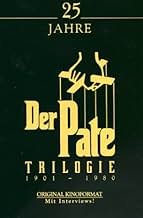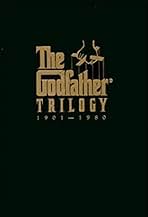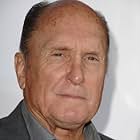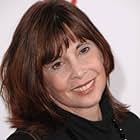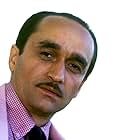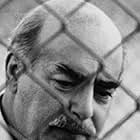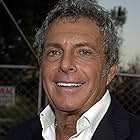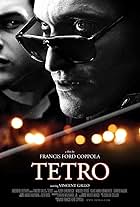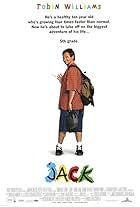The multigenerational saga of the rise and fall of the Corleone crime family.The multigenerational saga of the rise and fall of the Corleone crime family.The multigenerational saga of the rise and fall of the Corleone crime family.
Photos
Marlon Brando
- Don Vito Corleone
- (archive footage)
Al Pacino
- Don Michael Corleone
- (archive footage)
Robert Duvall
- Tom Hagen
- (archive footage)
Robert De Niro
- Young Vito Corleone
- (archive footage)
Diane Keaton
- Kay Adams
- (archive footage)
Talia Shire
- Connie
- (archive footage)
James Caan
- Sonny Corleone
- (archive footage)
John Cazale
- Fredo Corleone
- (archive footage)
Andy Garcia
- Vincent Mancini
- (archive footage)
Richard S. Castellano
- Peter Clemenza
- (archive footage)
Lee Strasberg
- Hyman Roth
- (archive footage)
Michael V. Gazzo
- Frankie Pentangeli
- (archive footage)
Sofia Coppola
- Mary Corleone
- (archive footage)
Richard Bright
- Al Neri
- (archive footage)
Eli Wallach
- Don Altobello
- (archive footage)
Abe Vigoda
- Sal Tessio
- (archive footage)
Gianni Russo
- Carlo Rizzi
- (archive footage)
Al Lettieri
- Virgil 'The Turk' Sollozzo
- (archive footage)
Storyline
Did you know
- TriviaWhen Vito Corleone, Clemenza and Tessio are going to the gunsmith the owner's name is Augustino Coppola, later he introduces his son, Carmine Coppola, who demonstrates his flute playing abilities. This scene is a tribute to Francis Ford Coppola's father and grandfather. His father was the first flautist with the NBC symphony under Arturo Toscanini. His grandfather was an actual gunsmith. His father worked in the "shop" from time to time as a child. They both insist the event actually happened.
- GoofsAs the Corleone's pack up to move to Las Vegas, there is a real estate sign outside the compound offering the property for commercial development. Later, Michael meets Frankie Pentangeli in his father's old (redecorated) house.
- Quotes
Don Vito Corleone: Never let anyone outside the family know what you're thinking.
- Alternate versionsA 1981 video release was titled The Godfather 1902-1959: The Complete Epic (in Japan it was titled The Godfather 1901-1959: The Epic). This version reportedly contains less additional scenes but has all the R rated stuff that was taken out of the broadcast version reinstated. In 1992, The Godfather Trilogy: 1901-1980 (1992) was released. It features "The Godfather 1902-1959: The Complete Epic" and The Godfather Part III (1990) edited in chronological order with more additional scenes then the epic but still not all the deleted scenes from the broadcast version. (The complete Godfather Saga with all deleted scenes from the broadcast version included was never released on home video).
- ConnectionsEdited from The Godfather (1972)
Featured review
The first two episodes of The Godfather have already been critically acclaimed. There's not much of a point in adding to these praises. There have been so many negative critiques of Part III that a commentary in favor of the final episode is due.
Here it is. The last of the trilogy can be appreciated for its consistency with the first two, particularly with the film's loyalty to the recurring theme of the entire saga: family.
Once lineless and rendered obscure to the plot, Lucy Mancini (original actress and all) has returned to the saga after being left behind in Part I. And she has brought a not-so-little remnant of her affair with Santino Corleone with her. Recall the scene in Part I when Sonny leaves Lucy's apartment with his henchmen to pick up his sister. That was perhaps the very moment after which the last Don Corleone was conceived.
Another one of Santino's remnants has returned to the saga in Part III: his twins (Francesca and the other one). They are now grown and still identical, and still adorable too. Remember their line in Part II, Mommy, Daddy's fighting again!" and their inclusion in the Corleone family portrait taken at Connie's wedding.
Also returning are Al Neri, Calo (the Sicilian bodyguard), Tommassino, Johnny Fontaine (voice still intact), and Sofia Coppola even though she posed as Connie's baby in Part 1. Speaking of Sofia, she arouses a touching appreciation of the scene in Part II that shows little Mary Corleone running in a hotel hallway while her parents argue inside the room. And Anthony becomes a paradox to the boy in Part I who is ostensibly imminent to be the next Godfather.
As usual, the political intrigue makes the film exciting if you're paying attention. And the very title of Part III presents a double meaning: third episode, third Godfather. Andy Garcia is perfect for the part (remember him in The Untouchables). As they say in the mob, Vincent Corleone "wears it" when he is ordained Don Corleone, Neri and others acknowledging his throne in the proper fashion. The scene chills you with nostalgia and images of Bonasera kissing Vito's hand, and Clemenza and Rocco Lampone kissing Michael's.
To be honest, Part III is rude to newcomers to the Corleone family. It's presumptuous that viewers will appreciate what's occurring without realizing that this will be the first time many even see a Godfather flick. This is also why so many critics bashed Part III. They critique it as an individual feature instead of an integral episode to a classic saga. Okay, okay...
The shortcomings of Part III comprise the main reason why the Trilogy version must be viewed to appreciate the Godfather saga. Like Phantom Menace, The Godfather Part III is empty without the rest of the story (even though Menace can stand alone better). Yet, like Star Wars, The Godfather is a classic of classics in literature, performance, and cinema: the best in motion picture history.
Here it is. The last of the trilogy can be appreciated for its consistency with the first two, particularly with the film's loyalty to the recurring theme of the entire saga: family.
Once lineless and rendered obscure to the plot, Lucy Mancini (original actress and all) has returned to the saga after being left behind in Part I. And she has brought a not-so-little remnant of her affair with Santino Corleone with her. Recall the scene in Part I when Sonny leaves Lucy's apartment with his henchmen to pick up his sister. That was perhaps the very moment after which the last Don Corleone was conceived.
Another one of Santino's remnants has returned to the saga in Part III: his twins (Francesca and the other one). They are now grown and still identical, and still adorable too. Remember their line in Part II, Mommy, Daddy's fighting again!" and their inclusion in the Corleone family portrait taken at Connie's wedding.
Also returning are Al Neri, Calo (the Sicilian bodyguard), Tommassino, Johnny Fontaine (voice still intact), and Sofia Coppola even though she posed as Connie's baby in Part 1. Speaking of Sofia, she arouses a touching appreciation of the scene in Part II that shows little Mary Corleone running in a hotel hallway while her parents argue inside the room. And Anthony becomes a paradox to the boy in Part I who is ostensibly imminent to be the next Godfather.
As usual, the political intrigue makes the film exciting if you're paying attention. And the very title of Part III presents a double meaning: third episode, third Godfather. Andy Garcia is perfect for the part (remember him in The Untouchables). As they say in the mob, Vincent Corleone "wears it" when he is ordained Don Corleone, Neri and others acknowledging his throne in the proper fashion. The scene chills you with nostalgia and images of Bonasera kissing Vito's hand, and Clemenza and Rocco Lampone kissing Michael's.
To be honest, Part III is rude to newcomers to the Corleone family. It's presumptuous that viewers will appreciate what's occurring without realizing that this will be the first time many even see a Godfather flick. This is also why so many critics bashed Part III. They critique it as an individual feature instead of an integral episode to a classic saga. Okay, okay...
The shortcomings of Part III comprise the main reason why the Trilogy version must be viewed to appreciate the Godfather saga. Like Phantom Menace, The Godfather Part III is empty without the rest of the story (even though Menace can stand alone better). Yet, like Star Wars, The Godfather is a classic of classics in literature, performance, and cinema: the best in motion picture history.
Details
- Release date
- Country of origin
- Languages
- Also known as
- La trilogía de El Padrino: 1901-80
- Production company
- See more company credits at IMDbPro
- Runtime9 hours 43 minutes
- Sound mix
- Aspect ratio
- 1.33 : 1
- 1.85 : 1
Contribute to this page
Suggest an edit or add missing content

